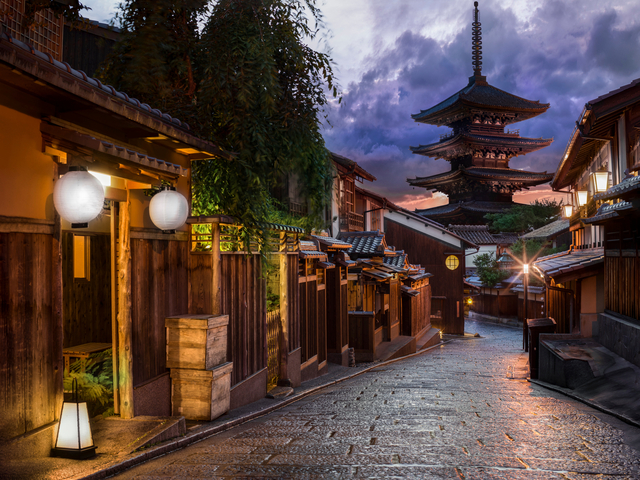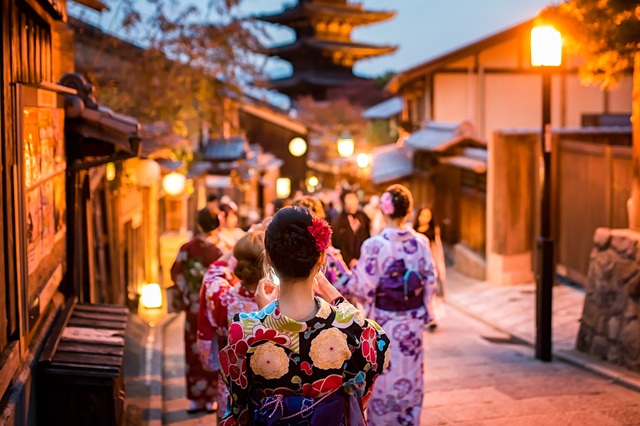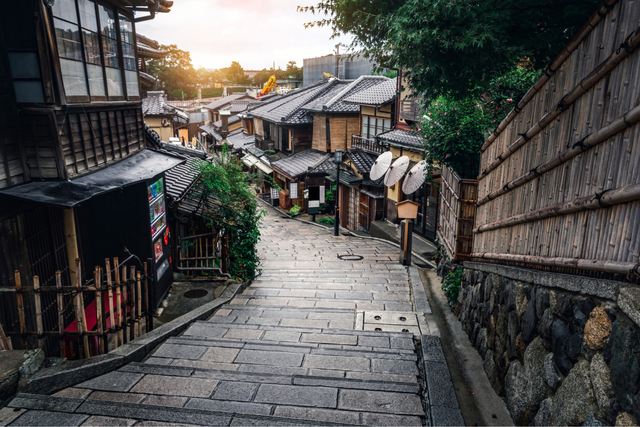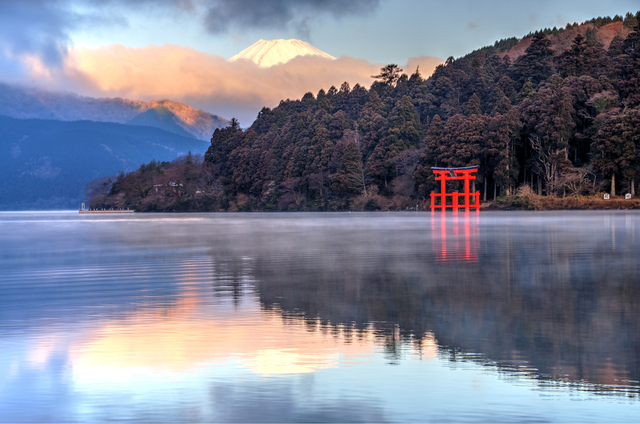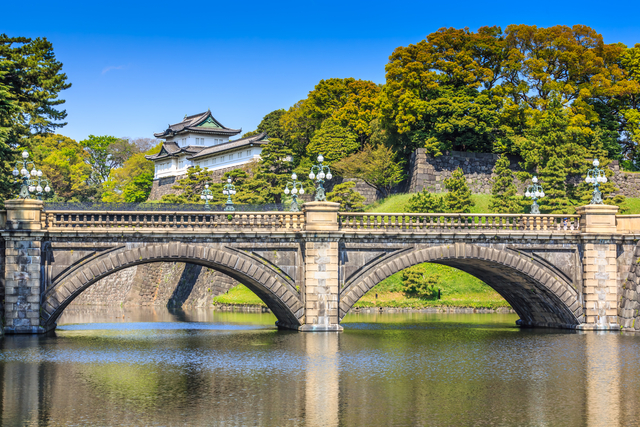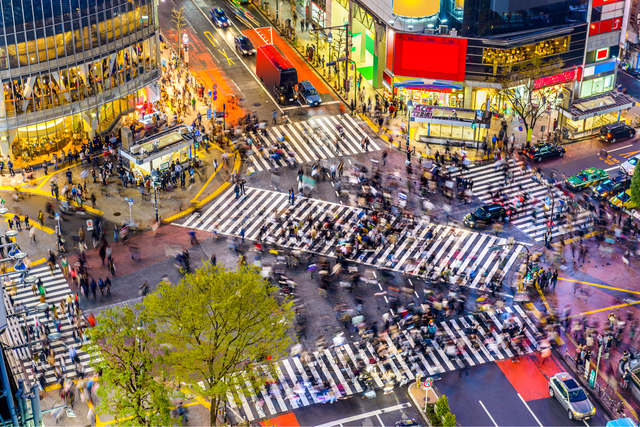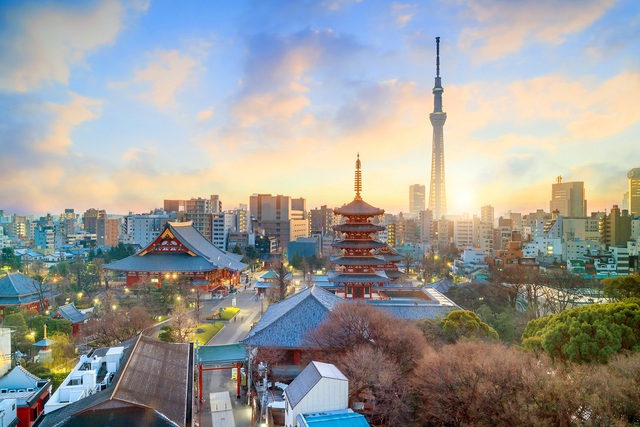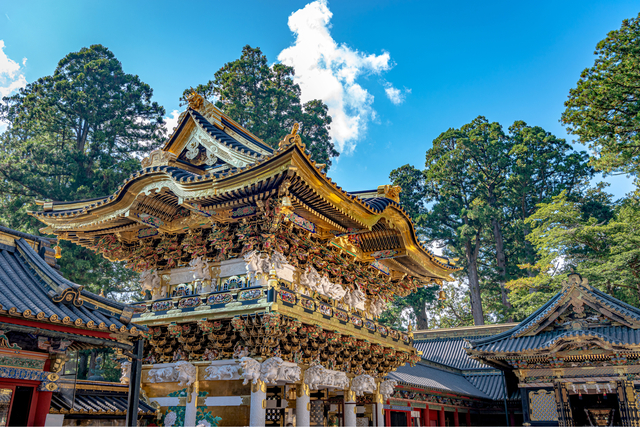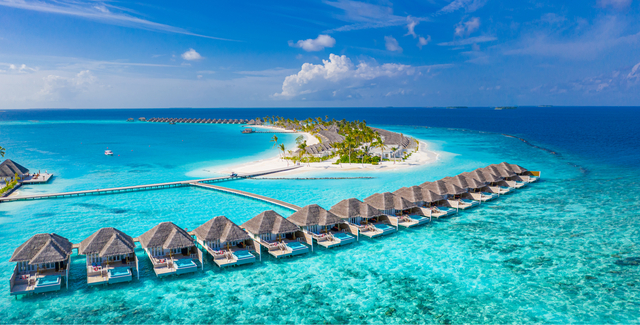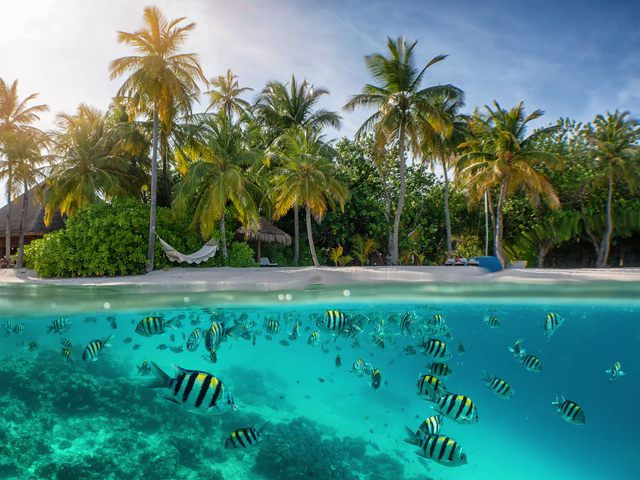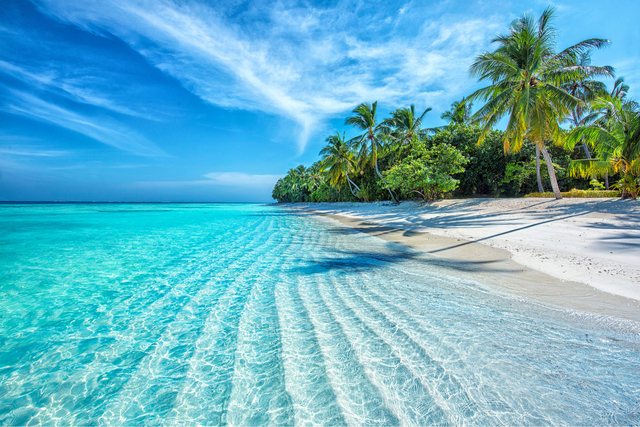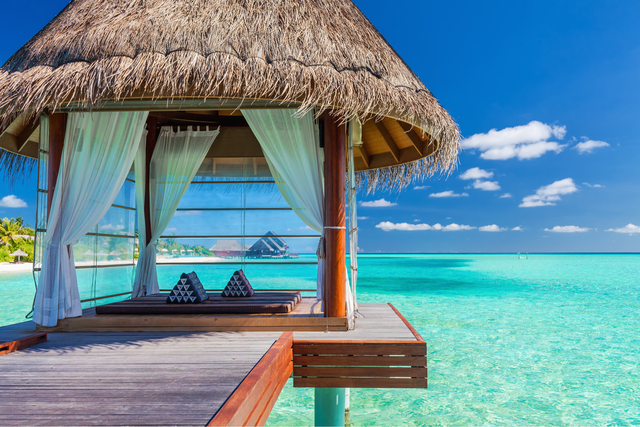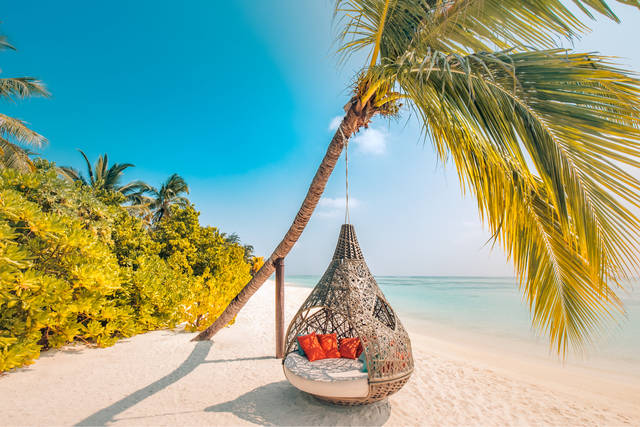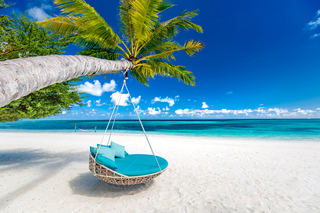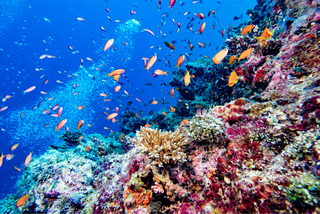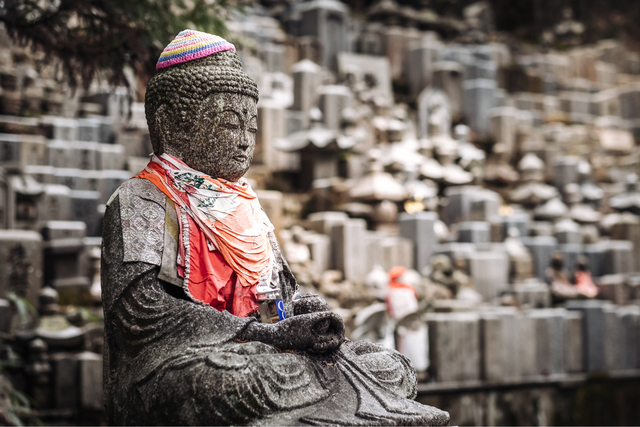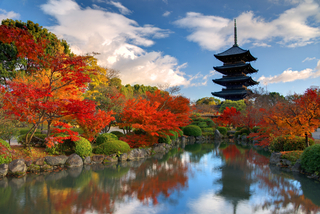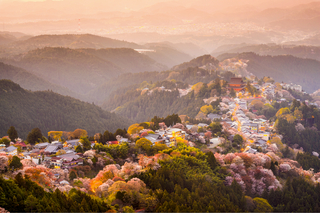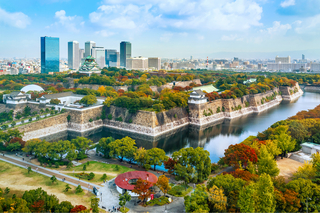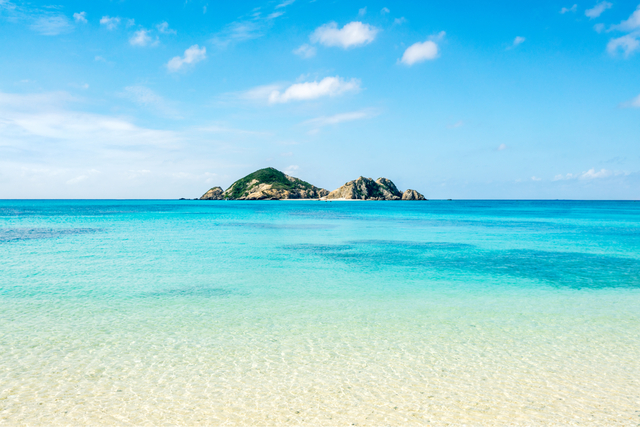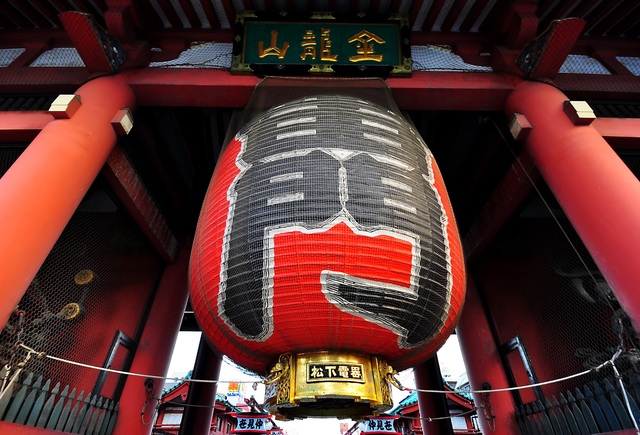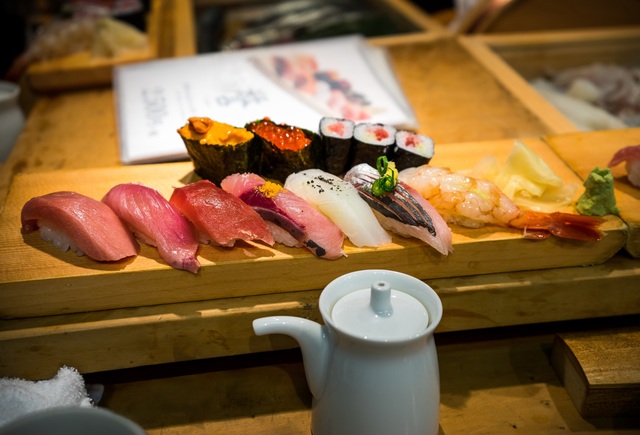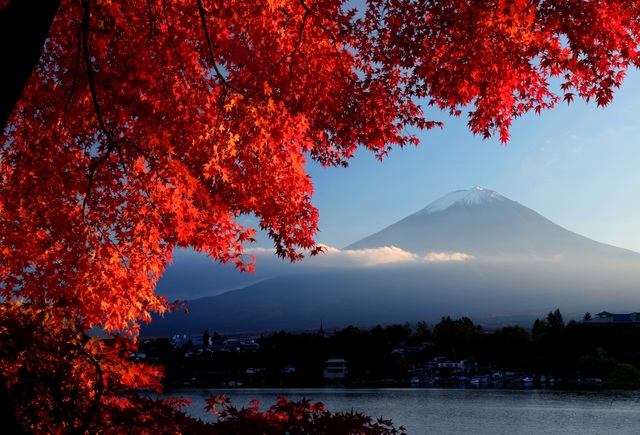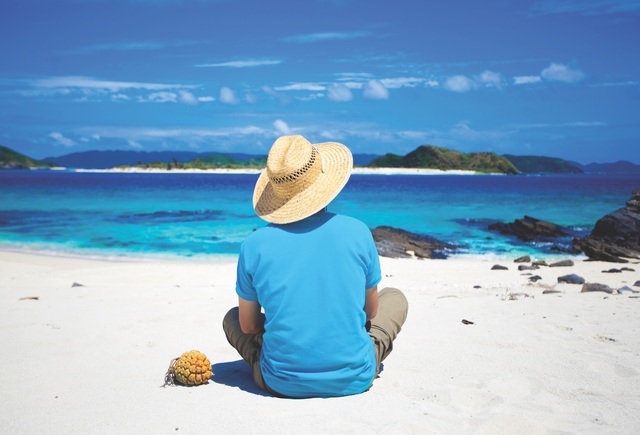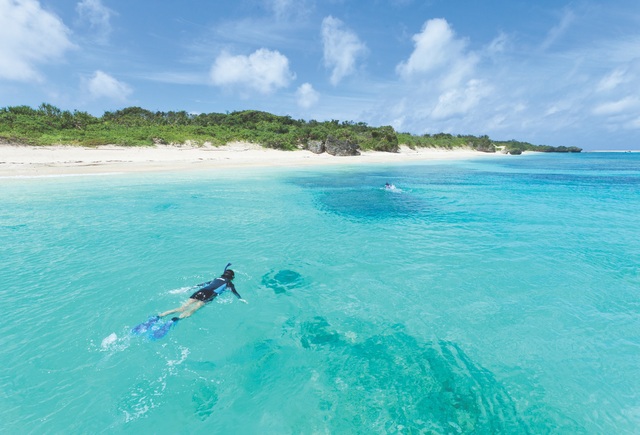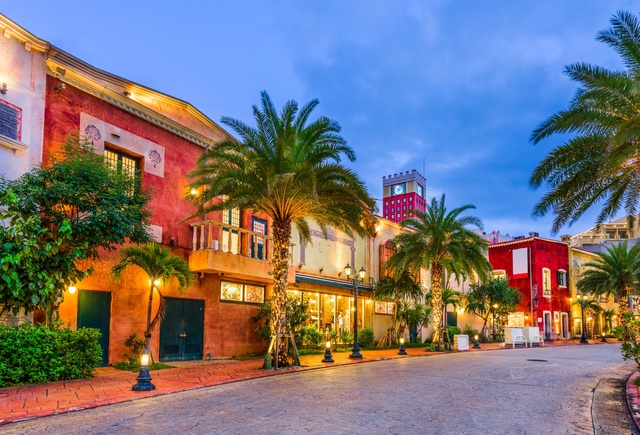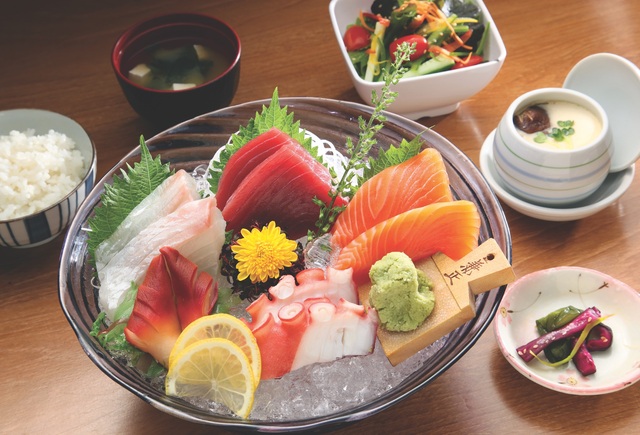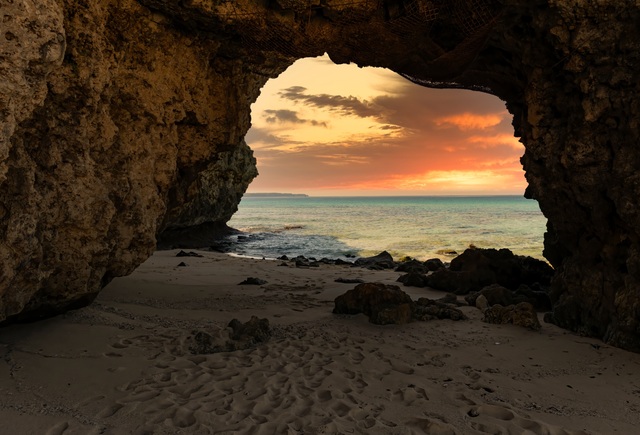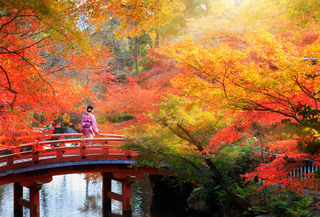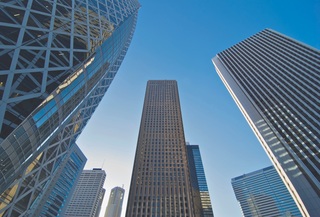Highlights of Japan
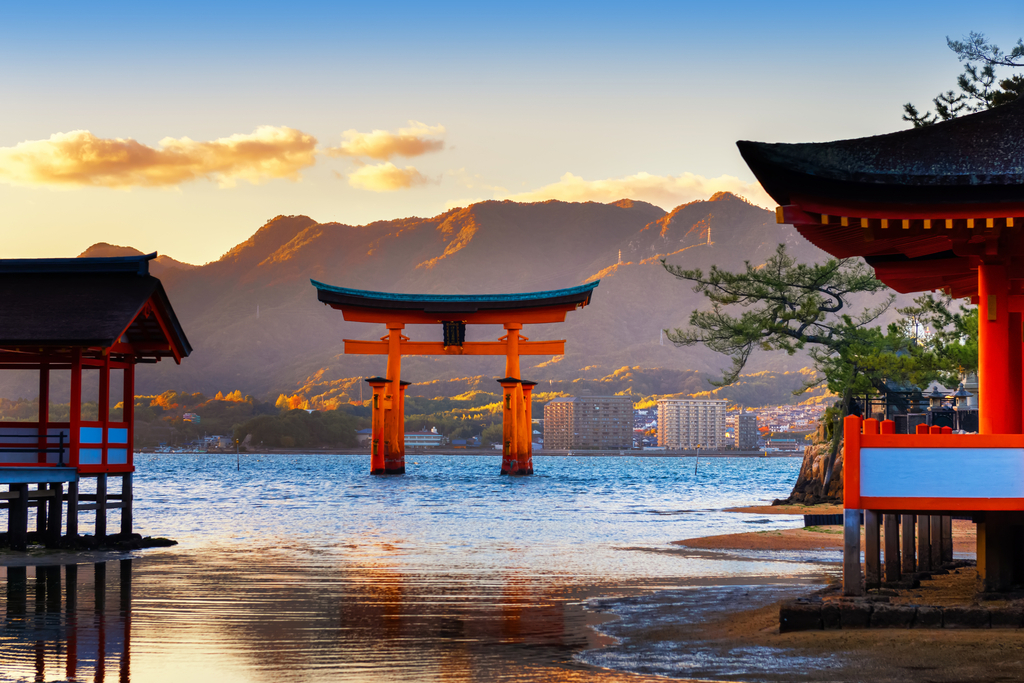
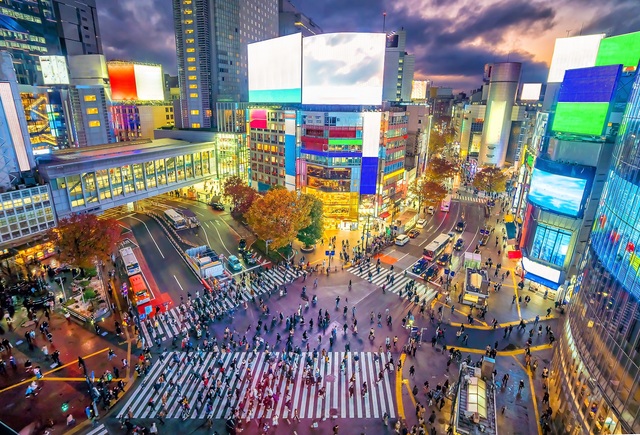
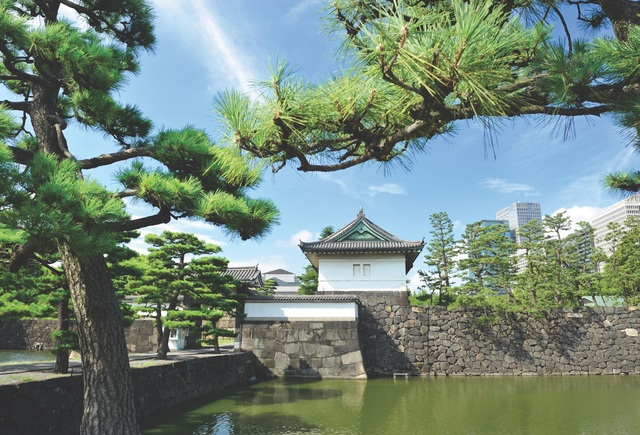
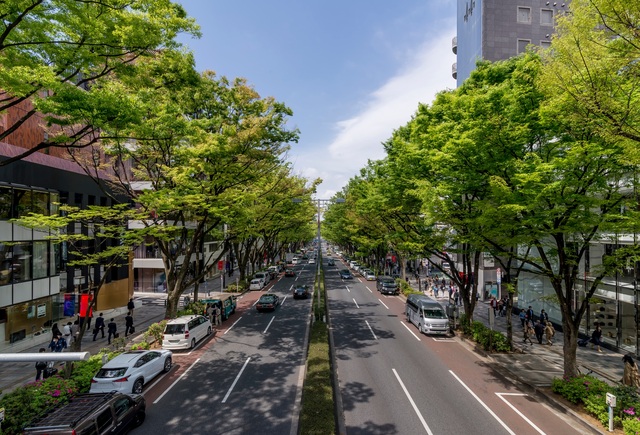
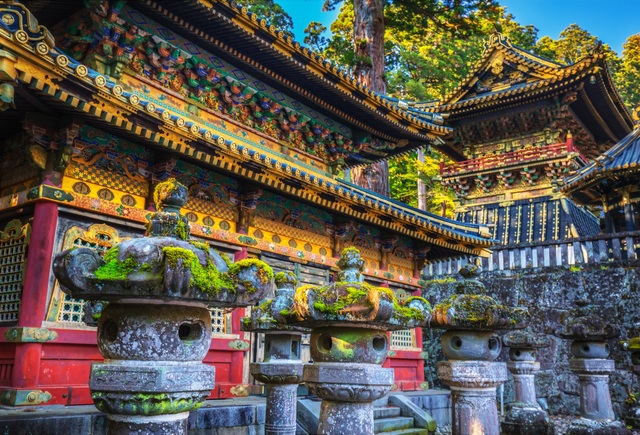
- Culture
- History
- Honeymoon
Overview
A comprehensive 13-day tour through the best of Japan.
You'll discover the magnificent wonder of Hakone National Park and Mt. Fuji, where you'll spend two nights in a traditional Japanese ryokan with hot spring bathing and authentic dining experiences.
With plenty of flexibility for excursions and the opportunity to travel by bullet train, you'll be surprised just how much Japan you can see and experience in such a short time.
Suggested itinerary
Take your overnight flight from Europe to Tokyo and get ready for the adventure ahead of you!
Welcome to Tokyo. The capital of Japan is a city that will excite you and tickle your senses. In Tokyo, Japan's profound traditions and world-famous culture intertwine with the latest innovative design trends, economic activity, subcultures, niche boutiques and Michelin-starred restaurants.
Tokyo has something for everyone. Immerse yourself in cultural experiences, ancient temples and Japanese gardens, and discover the latest in modern architecture, youth culture, high-tech equipment and gourmet experiences.
After arriving, we'll whisk you to your hotel in one of Tokyo's vibrant hubs. All our hotels offer easy access to public transport, enabling you to reach all of the city's sights and attractions within minutes. In the immediate area, you will also find countless local bars, Japanese restaurants, cafes, convenience stores, along with vast shopping malls and niche stores.
Depending on when you arrive, we suggest taking your first day easy, explore the local surroundings, and enjoy dinner in one of Tokyo's excellent restaurants. Perhaps try an izakaya, a Japanese version of a pub, with excellent food and drink, the perfect way to get acquainted with Japanese cuisine.
Spend your first full day in Tokyo exploring this multi-faced city. Due to its size, we suggest choosing an area you want to explore and don't forget to take advantage of the efficient public transport. Typically, visiting two to three neighbourhoods in one day is ideal.
Recommended must-see sights include the Imperial Palace, Sensoji temple (the oldest in Tokyo), Tokyo Skytree, the Tsukiji Fish Market and the fashionable Ginza district. For lunch, try ramen or one of the excellent sushi restaurants near Tsukiji market.
Spend your third day in Tokyo shopping, visit museums, or check out some of the latest art exhibitions.
Discover the hip districts of Harajuku and Shibuya, frequented by young Tokyoites. These funky pedestrian zones offer countless shops for fashionistas and are full of unique pieces. The famous scramble crossing in Shibuya is the busiest in the world, surpassing Times Square in New York. Be sure to catch panoramic views of Tokyo (and Mt. Fuji) from the top Shibuya Sky.
Also, make sure to stroll down nearby Omotesando boulevard with Omotesando Hills shopping mall (designed by world-famous Japanese architect Ando Tadao).
If you're into art and design, make sure you visit the Mori Building and Art Museum in Roppongi, and the immersive teamLab Planets exhibition in Toyosu, or the teamLab Borderless in Azabudai Hills.
Fill your fourth and final day in Tokyo, taking in more of the city's sights like Odaiba, Tokyo Bay. Here you will find the wonderful Palette Town shopping mall and entertainment complex, home to the Daikanransha (ferris wheel), plus additional attractions such as Miraikan (the National Museum of Emerging Science and Innovation) and Fune no kagakukan (the Museum of Maritime Science).
Otherwise, use the opportunity to get out of the city to see the sights around Tokyo. Some ideal locations outside the city include Nikko, about two and a half hours to the north, or Kamakura, just one hour to the south.
Nikko is home to the UNESCO World Heritage-listed Toshogu Shrine, a mausoleum for shogun Tokugawa Ieyasu, the great military leader (and country unifier) of the early 17th century. It's located in a beautiful national park with great lakes and crashing waterfalls.
On the other hand, Coastal Kamakura breathes a historical and religious atmosphere with many hidden temples in the surrounding forest, yet it's also a lovely place to stroll around exploring the many local shops. One temple you should not miss is Kotoku-in, where you will find an impressive Great Buddha statue.
Today you say goodbye to Tokyo before embarking on a one and a half hour train ride through the city's surroundings into the countryside, approaching Japan's most famous landmark, Mt. Fuji. At the foot of this sacred mountain lies Hakone National Park, a popular destination thanks to the many mineral-enriched hot springs (onsen) in the area.
You will have the Hakone Free Pass, which grants you full access to buses, trains, cable cars, and sailboats throughout the area.
It´s time to wear your yukata (light cotton kimono) and enjoy the Ryokan stay. Take a bath in hot spring water (onsen) and relax before enjoying a traditional Japanese dinner. After dinner, a futon awaits you, to sleep a comfortable Japanese night.
After breakfast at your ryokan, it's time to head southwest to Hiroshima by shinkansen (bullet train).
One must-see place is the Atomic Bomb Dome, the city's only ruin, along with the nearby Peace Museum, a moving exhibition detailing horrors of war. Afterwards, you can wander around the beautiful Peace Park or take a stroll down the lively pedestrian street of Hondori.
Make sure you taste real Japanese soul food in the form of okonomiyaki: a type of omelette with noodles, cabbage, and meat or seafood drizzled with a special sauce.
Use your second day to visit the sacred island of Miyajima, which is 45 minutes away by train and ferry. This charming island is officially registered as one of Japan's three most beautiful sights.
Island highlights include the impressive Itsukushima shrine and the "floating" red Shinto gate. You can also visit the Daisho-in Temple, which the Dalai Lama has visited several times, and take time to pet the tame deer which roam the area. Alternatively, take a walk (or the cable car) up Mt. Misen and enjoy the excellent sea views.
When returning to Hiroshima, and if time permits it, visit the Orizuru Tower next to the Atomic Bomb Dome during sunset. This former office building is today a fantastic viewpoint of Hiroshima and the surrounding inland sea. Orizuru, a bird made of origami paper, is a famous symbol of peace.
Depart Hiroshima by the shinkansen towards Kyoto and enjoy the view while you speed by at almost 300 km/h.
Halfway through your journey lies the city of Himeji and its 400-year-old UNESCO listed samurai castle, the most famous castle in Japan.
Himeji Castle also functioned as a historical movie setting quite often, the most notable result being the 1985 movie "Ran" (directed by the famous Kurosawa Akira).
After the castle, take some time to visit the local shops on the main high street before continuing your shinkansen journey to Kyoto, arriving with plenty of time to find a nice restaurant for dinner. Our tip is to try the underground restaurant floor next to Kyoto Station.
Kyoto was the capital of Japan from 794 to 1868, and the entire city is UNESCO-protected due to its enormously well-preserved cultural treasures. With over 1600 temples and 400 Shinto shrines, it's one of the most beautiful cities in the world.
Start by visiting the Ryoan-ji temple with its famous rock garden, and then the famous Kinkaku-ji 'Golden Pavilion.' Make your way towards Arashiyama in the western part of Kyoto, where you'll find the Tenryu-ji temple – an atmospheric Zen temple with a world heritage garden - and the famous Sagano bamboo forest. A terrific way to see the area is to hire a rickshaw for an hour.
On your way back to the centre, pay a visit to the former residence of the shogun, the UNESCO listed Nijo Castle. Public transport will get you between the sights easily, and it's also a great city to enjoy by bicycle.
Start your second day by visiting the Eastern part of the city and the famous Ginkaku-ji (Silver Pavilion), home to one of Japan's most fascinating landscape gardens. Ginkaku-ji is also the starting point of the Philosopher's Path, a trail along a small stream that's lined with Japanese cherry trees leading you to the beautiful Nanzen-ji temple.
Continuing further south, you will reach Kiyomizu-dera, a temple that towers over the city. The streets leading up to the temple have numerous local shops to try on traditional Japanese kimonos. Once you reach the temple, your reward will be panoramic views of Kyoto. Close by is the famous temple of Sanjusangendo Hall with its 1001 Buddha statues.
Finally, further to the south, there is the Fushimi-Inari Shrine which you will instantly recognise due to its countless number of red Shinto-gates all lined up one by one to create seemingly never-ending long red tunnels. Each gate was donated by a family or company in the hopes of receiving good fortune.
Spend your final day in Japan experiencing the cultural delights of Kyoto, such as a traditional tea ceremony, ikebana flower arranging, or getting dressed up in a kimono. Stroll through the Nishiki food market, sample local delicacies, and purchase Japanese knives or beautiful local pottery.
Or take the train to Uji, a delightful green village just south of Kyoto, famous for its green tea. A must-see is the Byodoin temple, which is immortalised on the 10 yen coin. At Byodoin, there are opportunities to experience a Japanese tea ceremony (which we'd be happy to arrange / reserve for you.)
Want to dive deep into the history of Japan? Then take a local train an hour out of the city to Nara. Nara was the original capital of Japan (before Kyoto) and has many famous sights to offer, all of which can be explored easily on foot.
Highlights include the Kasuga Taisha, a beautiful shrine located in the forest, famous for its countless lanterns, and the magnificent UNESCO listed Todai-ji. Stroll around the old streets, and be sure to stop by a local sake distillery for a tasting session.
Back in Kyoto, head to the narrow street of Ponto-cho to enjoy dinner in a traditional Japanese restaurant, many of which have wonderful river views and riverside terrace tables that are open in the summer season (July-August).
It's time to say "sayonara" (goodbye) or maybe "mata-ne" (see you again) to Japan. You'll be picked up at your hotel in Kyoto and driven to Osaka Kansai airport (approximately one and a half hours), from where you will depart to Europe.
We hope your adventure through Japan has been a journey that will enrich your life forever.
Accommodation
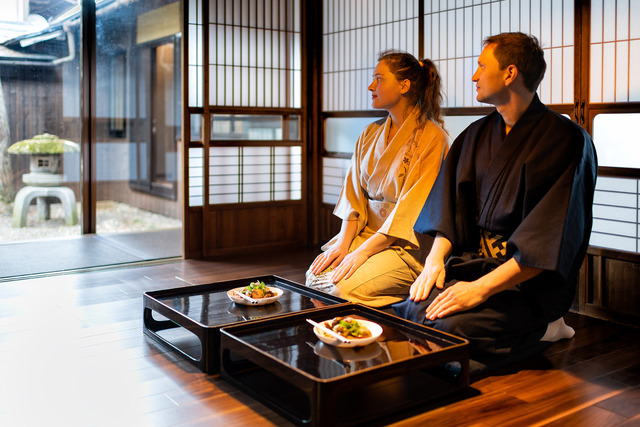 + 5 Photos
+ 5 Photos
A ryokan is a traditional Japanese inn that offers a unique cultural experience. Guests sleep on tatami mats, enjoy traditional meals and may have hot springs & gardens.
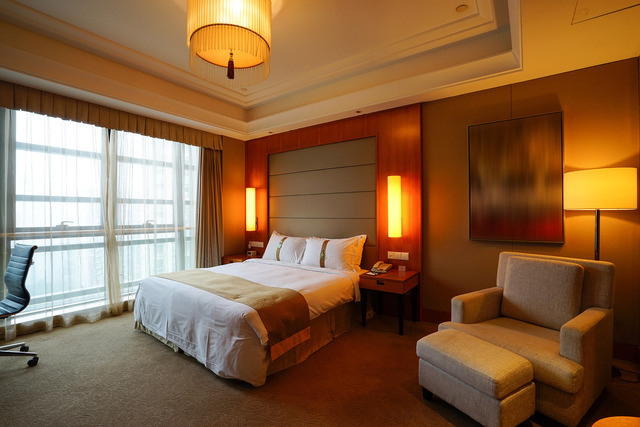 + 5 Photos
+ 5 Photos
Western-style hotels in Japan offer comfort and convenience with amenities like room service and fitness centres. Many are located in major cities and near popular destinations.
Important information
Important information
- Travel insurance is optional. Let us know if you’d like help adding it to your trip.
- The itinerary shown is an example. We’ll tailor the tour to fit your interests and travel style.
- Once you get in touch, we’ll fine-tune the details together to make sure the trip suits you perfectly.
What is included
- International return flight tickets
- Checked luggage
- Airport transfers
- 10 nights in western style accommodations
- 1 night in Japanese-style ryokan with onsen
- Breakfast and dinner (selected locations)
- Transport tickets between destinations
What is not included
- Local transport (buses, metro, taxis)
- Local city tax which needs to be paid on the spot
- Optional excursions and sightseeing tours
- Travel insurance



